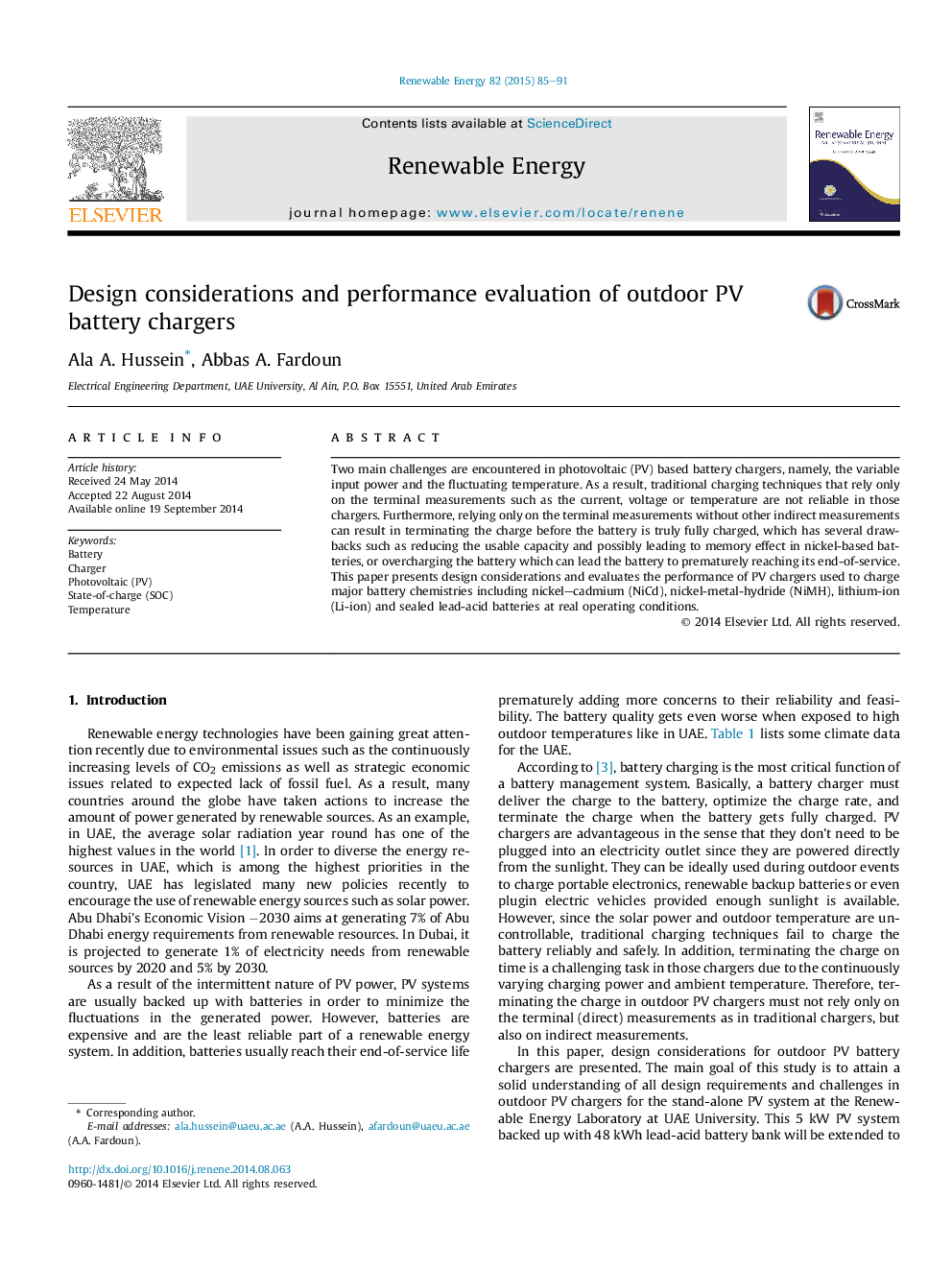| Article ID | Journal | Published Year | Pages | File Type |
|---|---|---|---|---|
| 299905 | Renewable Energy | 2015 | 7 Pages |
•Review of design requirements for outdoor PV battery chargers for major batteries.•Evaluation of charging techniques for traditional and PV chargers.•Improving coulomb counting SOC estimation technique by estimating the initial SOC.•Evaluating the effect of ambient temperature on the charger's reliability.
Two main challenges are encountered in photovoltaic (PV) based battery chargers, namely, the variable input power and the fluctuating temperature. As a result, traditional charging techniques that rely only on the terminal measurements such as the current, voltage or temperature are not reliable in those chargers. Furthermore, relying only on the terminal measurements without other indirect measurements can result in terminating the charge before the battery is truly fully charged, which has several drawbacks such as reducing the usable capacity and possibly leading to memory effect in nickel-based batteries, or overcharging the battery which can lead the battery to prematurely reaching its end-of-service. This paper presents design considerations and evaluates the performance of PV chargers used to charge major battery chemistries including nickel–cadmium (NiCd), nickel-metal-hydride (NiMH), lithium-ion (Li-ion) and sealed lead-acid batteries at real operating conditions.
